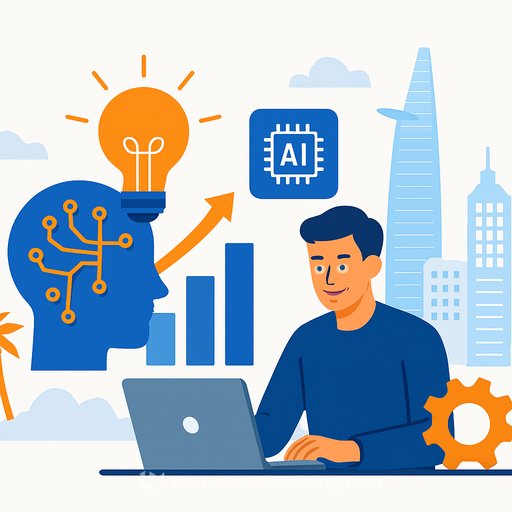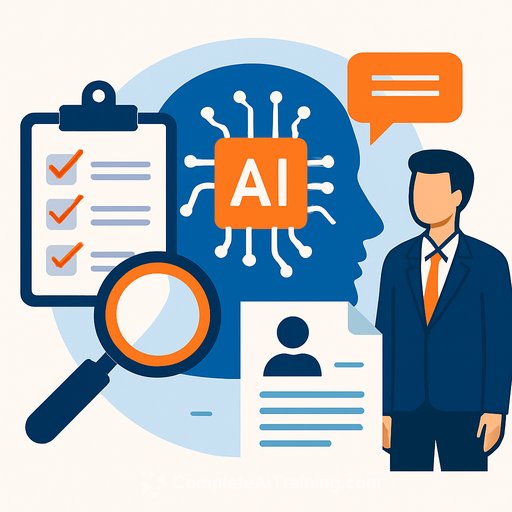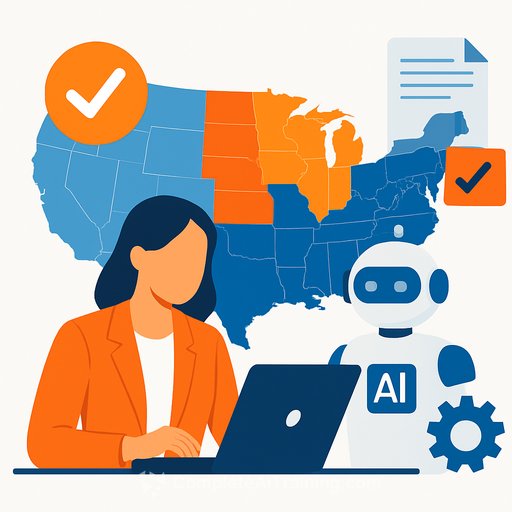AI Human Resources: A Key Driver of Innovation and Growth for Ho Chi Minh City
Industry 4.0 puts artificial intelligence at the center of business change. For Ho Chi Minh City, building a high-quality AI workforce is the fastest route to new products, leaner operations, and higher-value jobs.
With strong scientific and technological momentum, the city is well-placed to develop AI talent at scale. HR leaders can set the pace by aligning skills, roles, and governance with clear business outcomes.
What HR Leaders Should Prioritize Now
- Business-first skills map: Start with the top 5-10 AI use cases in your company. Map the skills needed per use case (data, models, integration, change management) and identify gaps by team.
- Role architecture: Define job families and levels for AI Product Manager, Data Scientist, ML Engineer, Data Engineer, MLOps Engineer, Prompt Engineer, AI Trainer/Labeler, and AI Ethics & Risk. Clarify career paths and mobility.
- Build-Borrow-Bot strategy: Build (upskill/reskill internal talent), Borrow (contractors, partnerships), Bot (automation to offset headcount pressure). Set a target mix and review quarterly.
- Upskilling tracks: Foundations for all staff (data literacy, prompts, privacy), Practitioner for analysts/engineers (Python, ML, LLM ops), Specialist for core AI teams (modeling, evals, MLOps, safety).
- Recruitment playbook: Use skills-based job posts, work-sample tests, portfolio reviews, and structured interviews. Add a brief take-home case tied to a real internal use case.
- Partnerships: Co-develop internships, capstone projects, and bootcamps with local universities, labs, and startups. Create talent pipelines before graduation.
- Governance & risk: Establish policies for data use, privacy, audit trails, bias testing, and human oversight. Maintain a model registry and sign-off protocol for production use.
- Adoption engine: Create an internal champions network, monthly demo days, and a backlog process for AI ideas. Reward shipped use cases, not slide decks.
- Metrics that matter: Track time-to-fill for AI roles, skill coverage per team, use cases shipped, model quality, and business results (cost saved, revenue added, cycle time reduced).
Core Skills to Develop Across the Organization
- Data literacy and basic statistics for every business function
- Prompt fluency and retrieval-augmented workflows
- Automation with RPA + AI for repetitive tasks
- Cloud fundamentals and API integration basics
- MLOps awareness: evaluations, monitoring, and incidents
- AI safety, privacy, and bias mitigation
- Domain expertise combined with analytics and experimentation
90-Day HR Action Plan
- Weeks 1-2: Run a skills inventory, identify priority use cases, and draft acceptable-use and data policies. Align with legal and security.
- Weeks 3-4: Finalize role definitions and leveling. Approve a hiring plan and vendor shortlist. Select training partners and internal instructors.
- Weeks 5-8: Launch pilot cohorts for Foundations and Practitioner tracks. Kick off internships and capstones. Stand up a community of practice.
- Weeks 9-12: Ship two pilots to production (e.g., AI recruiting assistant and AI customer support triage). Publish dashboards for outcomes and learning progress. Secure next-quarter budget.
Hiring and Rewards
- Benchmark compensation against both local market and remote-first employers. Adjust faster for rare skills (e.g., MLOps, applied safety).
- Offer project-based bonuses for shipped use cases and measurable outcomes. Recognize cross-functional contributors, not just core AI roles.
- Use skill verification over credential bias: code samples, notebooks, model cards, and real problem-solving.
Policy Checklist for Responsible AI
- Acceptable use, data classification, and third-party tool vetting
- Shadow AI disclosure and audit logs for sensitive workflows
- Bias, privacy, and safety testing before and after deployment
- Human-in-the-loop requirements for high-stakes decisions
- Clear rules for candidate data, assessments, and fairness in hiring
Why Ho Chi Minh City Can Lead
The city blends technical education, a strong startup scene, and a diverse industry base. HR teams can connect these assets into a steady pipeline of AI-ready talent and practical use cases that move the numbers.
Prioritize skills over titles, use pilots to prove value, and scale what works. This is how AI human resources become a growth engine for the city and for your business.
Recommended Resources
- World Economic Forum: Future of Jobs Report
- AI courses by job role (Complete AI Training)
- Popular AI certifications (Complete AI Training)
Your membership also unlocks:






